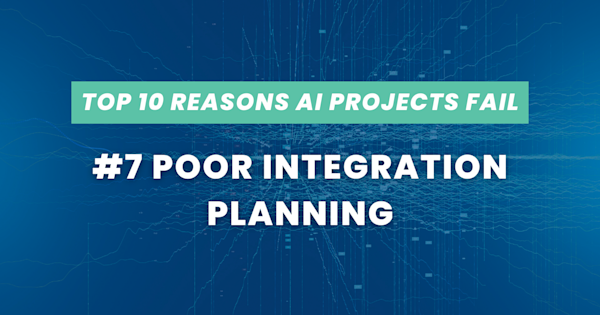What is Blockchain?
Blockchain is a collection of transactions, or blocks, that interconnect. This collection is growing over time, as more blocks are added to the chain. This collection is often called a digital ledger and distributed across a multitude of systems. These systems are nodes. The information contained in the transactions is specific to each transaction and usually relevant to that blockchain and its surrounding ecosystem of applications.
The nuance and innovation of this technology is that the blocks link together using cryptography to make them resistant to change and verifiable. If you were to change a single block in the past, you would have to recreate every later block for it to be valid.
What is NOT Blockchain?
This is the most important question we are going to cover because of the amount of misunderstanding in the market and media surrounding blockchain. We are going to explore different concepts that are often confused in discussions of blockchain.
It is Not Digital Money
Digital currency is one type of implementation on top of a blockchain and we have seen a lot of activity and news coverage in this space. Separating the two can be difficult but think of the distinction like the technology that powers internet websites and your favorite websites. While using related and similar technologies, the websites can vary.
It is Not a Scam. It's Just Data Folks!
Expanding on our website analogy, the underlying technology is real and valid. There are scam implementations of blockchains the same way there are scam websites. This doesn’t mean that all websites, or all blockchain implementations, are scams. It does mean that we need to be careful and do some research before jumping on the bandwagon.
It is Not Anonymous
Again, we look at the website example as an analog for blockchain. When we go to a site that doesn’t ask us for our information, are we anonymous? Ultimately the answer is no in today’s world. There are many ways to identify us, and it doesn’t take much effort. Imagine now that the log of the website traffic was freely and publicly available. This is what anonymous looks like on blockchain.
The anonymity of blockchain is a pervasive myth that harkens back to the origin of some cryptocurrencies. Because there was no centralized tracking authority, some people came to believe that it was anonymous. After all, we don’t have to provide personal details when dealing with some blockchains. The blockchain is meant to be distributed and verifiable, which implicitly means that it is not anonymous. It may take a bit of digging to turn blockchain transactions into names, but Whale Alert does just this in real-time. The key takeaway is that while your personal information may be hidden, it is not anonymous.
It is Not Just a Database for Storing Assets
The problem with storing large amounts of data in a blockchain is that it slows down the calculations that tie the blocks together. This is typically counter-productive to the purpose of the chain. In some cases, the blocks in the chain store a minimal amount of information that is expanded in external systems or other types of records.
What are the Benefits of Using a Blockchain?
Traditionally two groups that don’t trust each other would need a 3rd party that both trusted, or middle-man, to do business together. Blockchain acts as an automated 3rd party for transactions without entities having a trust relationship. Because the details of each transaction are part of the blocks and the chain can enforce rules on the participants through its calculation, the parties can verify each other’s behavior. For example, in buying a house you need to account for all funds and confirm that they transfer completely before handing over the keys to the house. This requires an agent to act as an independent third-party in the transaction but with blockchain, these types of transactions are disintermediated. The reduction in costs for transactions is net benefit to those doing the transaction and ultimately increases the overall economic flow without losing security. It is great news for those saving money on buying the house, by not having to pay a title company, but bad for those middle-man businesses.
It is important to remember that blockchain itself does not provide the systems for handling transactions but rather provides the plumbing for these types of implementations. It's the backbone that allows for a targeted set of applications built to serve a purpose. Like our website example, someone still must build Amazon before you can buy something with Amazon Prime. The technology only enables the building of the site.
Ethereum, for example, is about providing both the blockchain and the ecosystem to build applications that answer a business need. Developing a whole set of applications that might be used for delivering and tracking your electrical usage at home, along with the website that allowed you to pay your electric bill while seeing where in the supply chain your electricity was generated might be one way that we would use these ecosystems to build business solutions.
What are the Potential Impacts of Blockchain on the World?
Transactions that want to be recorded on the blockchain have a 2-step process to go through. First, the validation of the user and transaction is done with a private/public key encryption to ensure that the user offering the transaction is authorized to do so. Once this is verified, the transaction is added to a block. The block is then calculated by the computing power of the network. This is often called mining because there is a reward for getting the right answer the fastest. This allows the distributed network to come to consensus on what valid transactions are.
Bad actors can hijack consensus depending on the methods utilized by a specific blockchain. These are often referred to as 51% or 34% attacks. Common consensus methods are Proof of Work and Proof of Stake and each has its benefits and drawbacks depending on the need to mitigate entities with large hashing power or need to expedite transactions (network speed). Several blockchains, like Novacoin and Decred, even combing these methods for more robust mitigation of the typical speed-security tradeoff.
What Industries Stand to Benefit the Most or the Soonest?
In thinking about how certain industries might change using blockchain technologies, there a few easy ones that come to mind.
First might be banking and while cryptocurrencies are certainly at the forefront of that, there are sub-sections of banking such as mortgage and property taxes that could benefit from solutions building on this technology. Our example above of reducing the friction and cost of closing on a mortgage would be an easy example to pull in. Another example would be title verification for liens, or repair history for automobiles before lending against those as collateral.
Supply chains are another ripe area for using this technology. Giving us more visibility into where things come from and how they are sourced is an area of focus for many innovators in this area. This is the space that Topl, a Houston Texas based start-up, is targeting, and we heard from them at the Improving Edge conference.
Finally, would be where there are questions of ownership or provenance like with art, collectibles, equities, or even real estate. If there was a publicly available, verified record of the ownership and provenance, we could both reduce the transaction costs of transfer as well as provide more velocity to those transactions by guiding the buyer and seller to each other more clearly.
Where Do We Go From Here?
As we continue to build blockchains that prove out some of the assumptions above, those will inform the next set of areas that could benefit. The expertise in these areas is rare and if you are looking at an implementation of a blockchain for your business we can share some lessons learned so please reach out.





